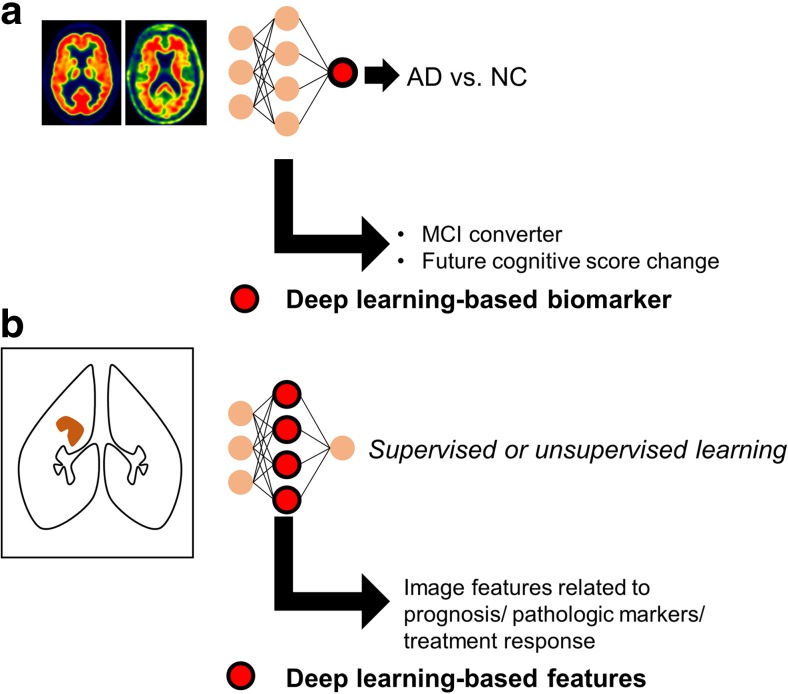Fig. 4.
Two types of deep learning-based imaging biomarkers. a Outputs of deep learning model can be used as a biomarker. A deep convolutional neural network model for discriminating Alzheimer’s disease could be directly transferred into identification of mild cognitive impairment patients who would rapidly convert to dementia. Additionally, the output score of the model was well correlated with future decline of cognitive score. b As deep learning is an automated discriminative feature learning, hierarchical features of neural networks can be used as multidimensional biomarkers. Image features related to prognosis or treatment response can be selected after the training of deep learning models

